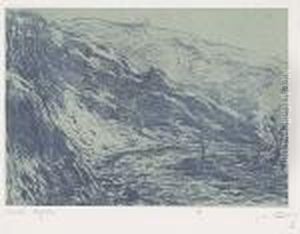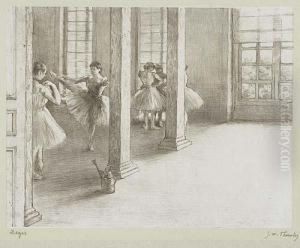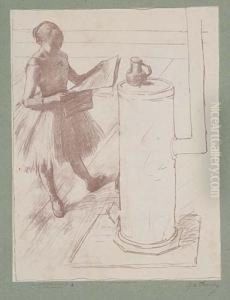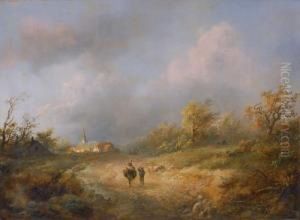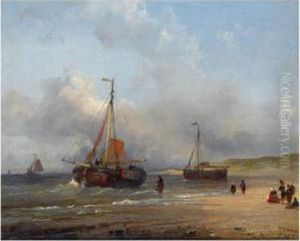Wilhelm George Wagner Paintings
Wilhelm George Wagner, not to be confused with the famous composer Richard Wagner, was a German landscape painter known for his atmospheric representations of the German countryside. Born on March 24, 1843, in Berlin, Germany, he was part of the late 19th-century art movement that focused on naturalism and the romantic tradition.
Wagner's early life was characterized by his passion for the arts, and he pursued his artistic education at the Prussian Academy of Arts in Berlin. He studied under various prominent painters of the time, which helped him develop his skill in capturing the essence of nature. His style was influenced by the romanticist ideals of the time, which emphasized emotion and the sublime beauty of the natural world.
Throughout his career, Wagner exhibited his works at various art shows and gained a reputation for his lush, detailed landscapes. His paintings often depicted the German countryside, forests, and rivers, executed with a keen eye for light and atmosphere. Wagner's ability to convey mood through his use of color and light made his work popular among art collectors and the public.
Wagner's productivity continued through the latter years of the 19th century and into the early 20th century. However, as the art world began to shift towards modernism and abstract art, Wagner's traditional style became less fashionable. Despite this, he maintained a dedicated following and continued to create his evocative landscapes until his death on February 18, 1917, in Berlin.
While Wilhelm George Wagner may not have been a revolutionary figure in the art world, his contributions to German landscape painting have been appreciated by art historians and collectors. His works can be found in various private collections and occasionally appear in auctions, where they are valued for their historical and aesthetic charm. Wagner's dedication to his craft and his ability to capture the spirit of the German countryside leave a lasting legacy in the realm of landscape painting.
